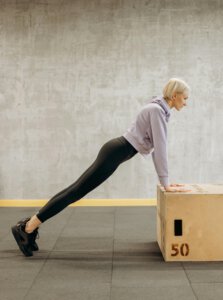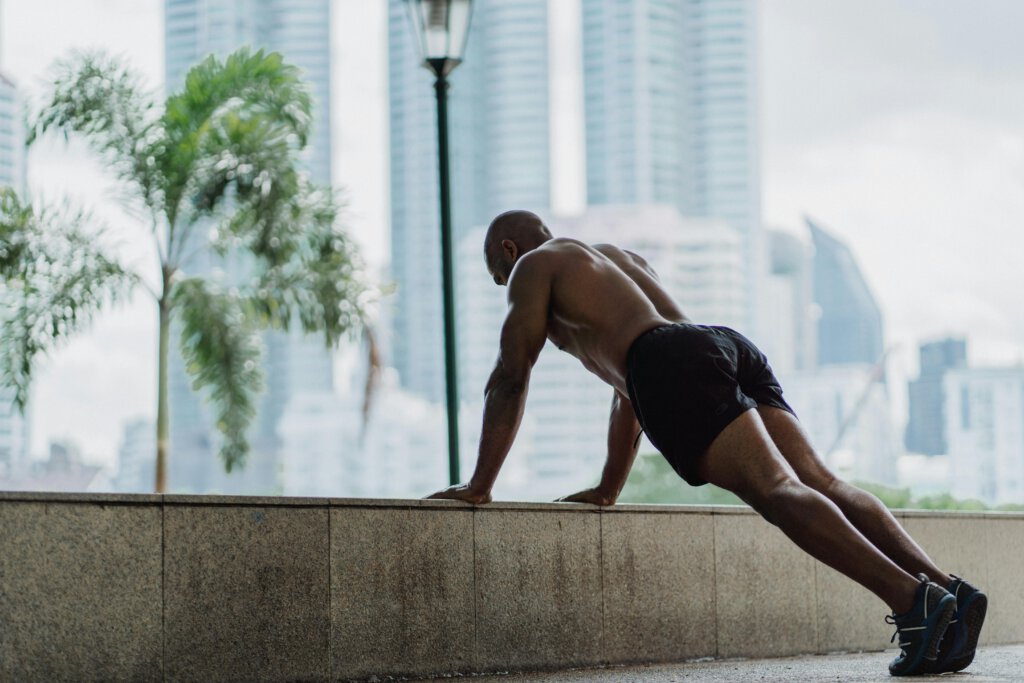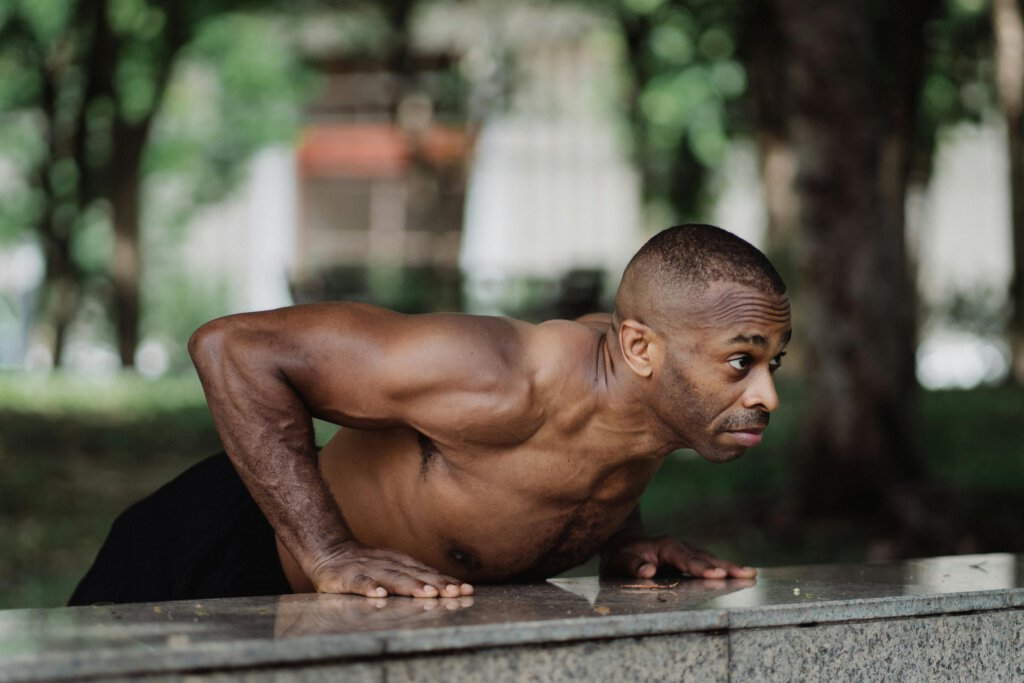How to do incline push-ups for beginners in Calisthenics
Ready to kickstart your calisthenics journey? Incline push-ups are the perfect exercise for beginners to build upper body strength and confidence. Did you know that push-ups can increase your upper body strength by up to around 20% in just eight weeks? This beginner-friendly move targets your chest, shoulders, and core while being easier on the joints than standard push-ups.
Whether you’re new to fitness or transitioning to bodyweight training, mastering incline push-ups sets a strong foundation for calisthenics success. This guide breaks down the steps, benefits, and tips to perfect your form and progress in your workout routine.
What are incline push-ups and why they matter
Ever tried a push-up and felt like your arms were gonna give out? Incline push-ups are a game-changer for calisthenics beginners, letting them build upper body strength without the intimidation of standard push-ups.
They’re a bodyweight exercise where you place your hands on an elevated surface like a sturdy table, bench, or even a wall—reducing strain on your joints while still targeting chest exercises, shoulder strength, and core stability.
A beginner named David, for instance, started with incline push-ups on his kitchen counter and was amazed at how quickly he felt stronger, without the shoulder or wrist pain he got from floor push-ups.

Why do they matter? They’re perfect for fitness for beginners because they’re low-impact workouts that anyone can do, no matter their fitness level. Unlike regular push-ups, which can stress wrists and shoulders, incline push-ups ease you into strength building.
A 2020 study from the Journal of Strength and Conditioning Research: https://pubmed.ncbi.nlm.nih.gov/31868813/ found bodyweight training like this boosts muscle activation by up to 40% in beginners when done correctly. The beauty is their accessibility and the best is that you can do them at home, no gym needed!
Common mistakes are that people often place hands too high, making it too easy, or let their hips sag, which messes up push-up form. To avoid this, pick a surface about knee-to-hip height and keep your body straight like a plank. Using a sturdy yoga block can help if you’re practicing on uneven surfaces, offering a stable grip to perfect your form.
Tips:
- Use a stable surface for safe incline push-ups.
- Keep elbows slightly bent to avoid locking joints.
- Engage core for better stability and strength.
Benefits of incline push-ups for beginners
Incline push-ups are a total game-changer for anyone starting their calisthenics journey. They’re like the friendly cousin of standard push-ups, offering all the perks without overwhelming beginners.
What makes incline push-ups so awesome? They target the chest, shoulders, triceps, and core muscles while being gentler on the joints. Beginners often struggle with poor posture from desk jobs, but these low-impact workouts help strengthen the upper body and improve alignment.

Ever catch yourself slouching? Incline push-ups engage your core stability to keep that spine straight. Plus it is scalable, start with a high surface like a kitchen counter and work down to a lower one to like a book as you get stronger.
One common mistake is thinking incline push-ups are “too easy” and skipping them. Rushing to harder moves without building strength can lead to sloppy push-up form and even injury. You can learn this the hard way if you want, you can strain your shoulder by trying many standard push-ups too soon.
Stick with incline push-ups to build a solid foundation for calisthenics training. A good yoga mat can make these workouts nicer on your hands, especially on hard surfaces. It’s not a must, but it’s a nice touch for home workouts.
Takeaways:
- Strengthen chest, shoulders, triceps, and core with incline push-ups.
- Improve posture and joint stability with low-impact workouts.
- Build confidence for tougher calisthenics moves.
- Scale gradually to ensure safe exercise progression.
Step-by-step guide to performing incline push-ups
This section breaks down proper form to help you nail incline push-ups and feel stronger with every rep. Starting by choosing a sturdy elevated surface, a bench, table, or even a low wall works great. Place hands shoulder-width apart, fingers pointing forward, and keep the body in a straight line from head to heels.

A wobbly surface or uneven hand placement can throw off balance, so check stability. When going down, bend elbows to lower the chest toward the surface, keeping them at a 45-degree angle to the body. Push back up smoothly, fully extending arms without locking elbows.
Breathing is key. Inhale as you lower, exhale as you push up. It sounds simple, but forgetting to breathe can make you dizzy fast. For a solid surface, a sturdy bench is perfect for home workouts. It’s adjustable, so you can progress as strength builds.
Watch these videos to see how it is done properly:
Takeaways:
- Use a stable, elevated surface for safety.
- Keep elbows at 45 degrees to avoid strain.
- Breathe in on when going down, out on going up.
- Maintain a straight body line for core stability.
Common mistakes and how to avoid them
Push-ups seem simple, but nailing proper form is trickier than it looks. Many beginners mess up hand placement, flaring elbows out like they’re trying to fly. This strains the shoulders and kills the push-up benefits for chest and core stability. Place hands just wider than shoulders, fingers spread, and keep elbows at a 45-degree angle to engage those upper body strength muscles effectively.
A classic mistake is letting the hips sag, turning the push-up into a weird yoga pose. Straight body line from head to heels is key for calisthenics training. Imagine a plank, engage the core like you’re bracing for a punch to keep that bodyweight exercise form tight.
Rushing reps is another trap, people try to put out push-ups like they’re racing, but sloppy, fast moves cheat your strength building. Slow down, control the descent, and breathe out on the way up. Improper breathing, like holding your breath, makes you tire faster; exhale as you push, inhale as you lower.
Using a yoga mat can make push-ups comfier on wrists and give grip for better form. These tweaks, learned from trial and error, boost muscle activation and make push-ups a low-impact workout win.
Takeaways:
- Hands just wider than shoulders, elbows at 45 degrees.
- Keep a straight body line to avoid sagging hips.
- Slow, controlled reps with proper breathing maximize push-up benefits.
How to progress from incline push-ups
Incline push-ups are a fantastic starting point for building upper body strength, especially for beginners dipping their toes into calisthenics. But, let’s be real, sticking with the same incline forever gets boring, and your muscles will stop growing if you don’t challenge them.
A common mistake is jumping straight to standard push-ups without a plan, leaving you frustrated with shaky form or worse, a pulled muscle. The trick is gradual progression to keep your chest, shoulders, and core screaming for more without crashing and burning.
Start by lowering the incline height every couple weeks, from a sturdy kitchen counter to a low bench. This increases the intensity as your bodyweight shifts more onto your arms. Another element is ignoring push-up variations.
Sticking only to incline push-ups misses out on building well-rounded strength. Try mixing in diamond push-ups for triceps or wide push-ups for chest focus. Adding reps or sets also builds endurance, aim for 3 sets of 12-15 reps before dropping the incline further.
Takeaways:
- Lower incline height gradually to increase difficulty.
- Add push-up variations like diamond or wide for balanced strength.
- Increase reps/sets to build endurance before moving to standard push-ups.
- Track progress to stay consistent and avoid injury.
Conclusion
Incline push-ups are a game-changer for beginners diving into calisthenics. They build strength, boost confidence, and pave the way for more advanced bodyweight exercises. By mastering proper form and avoiding common mistakes, anyone can progress steadily. Ready to take your fitness to the next level?
Start with incline push-ups, and explore more calisthenics moves on our platform to transform your workout routine.

